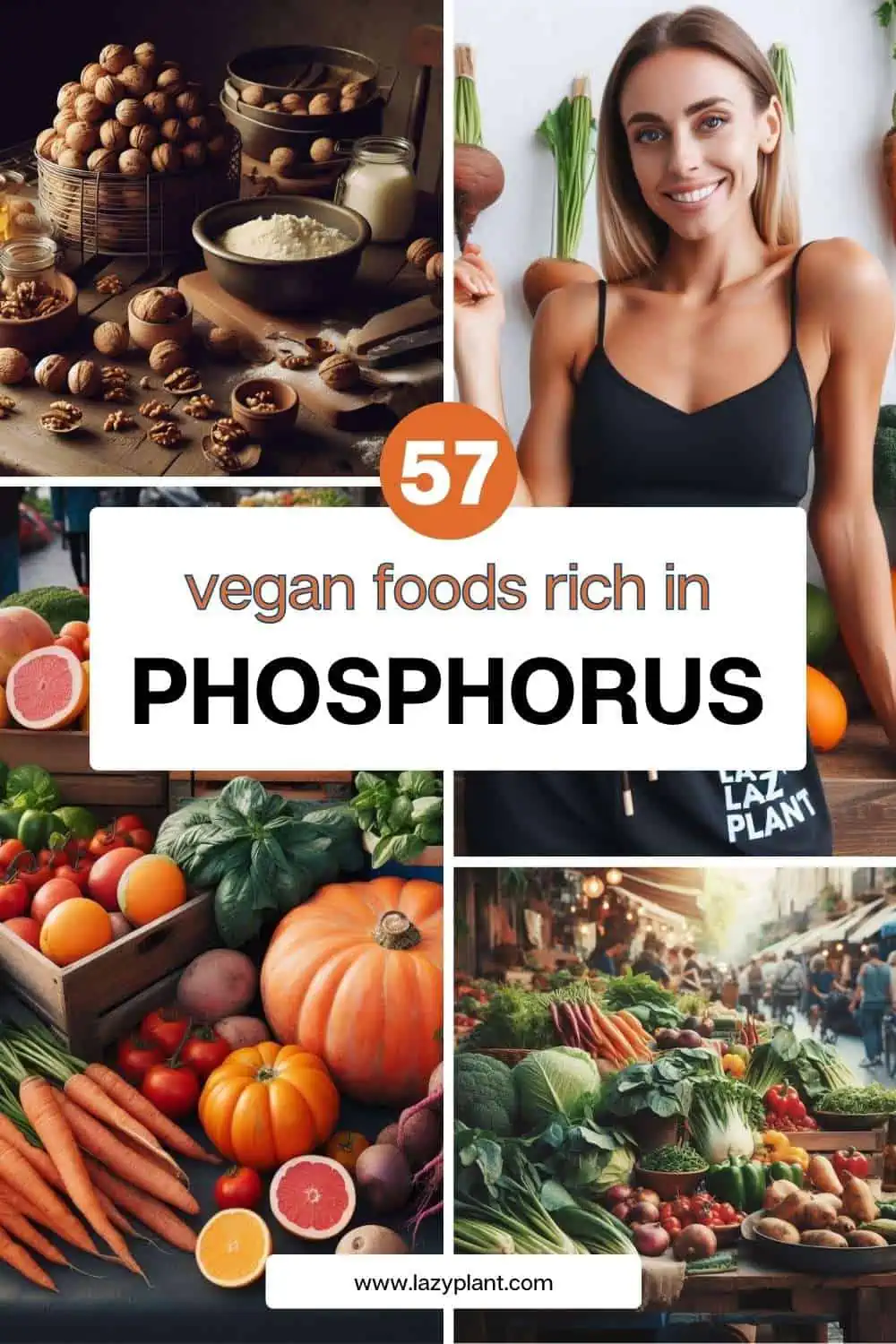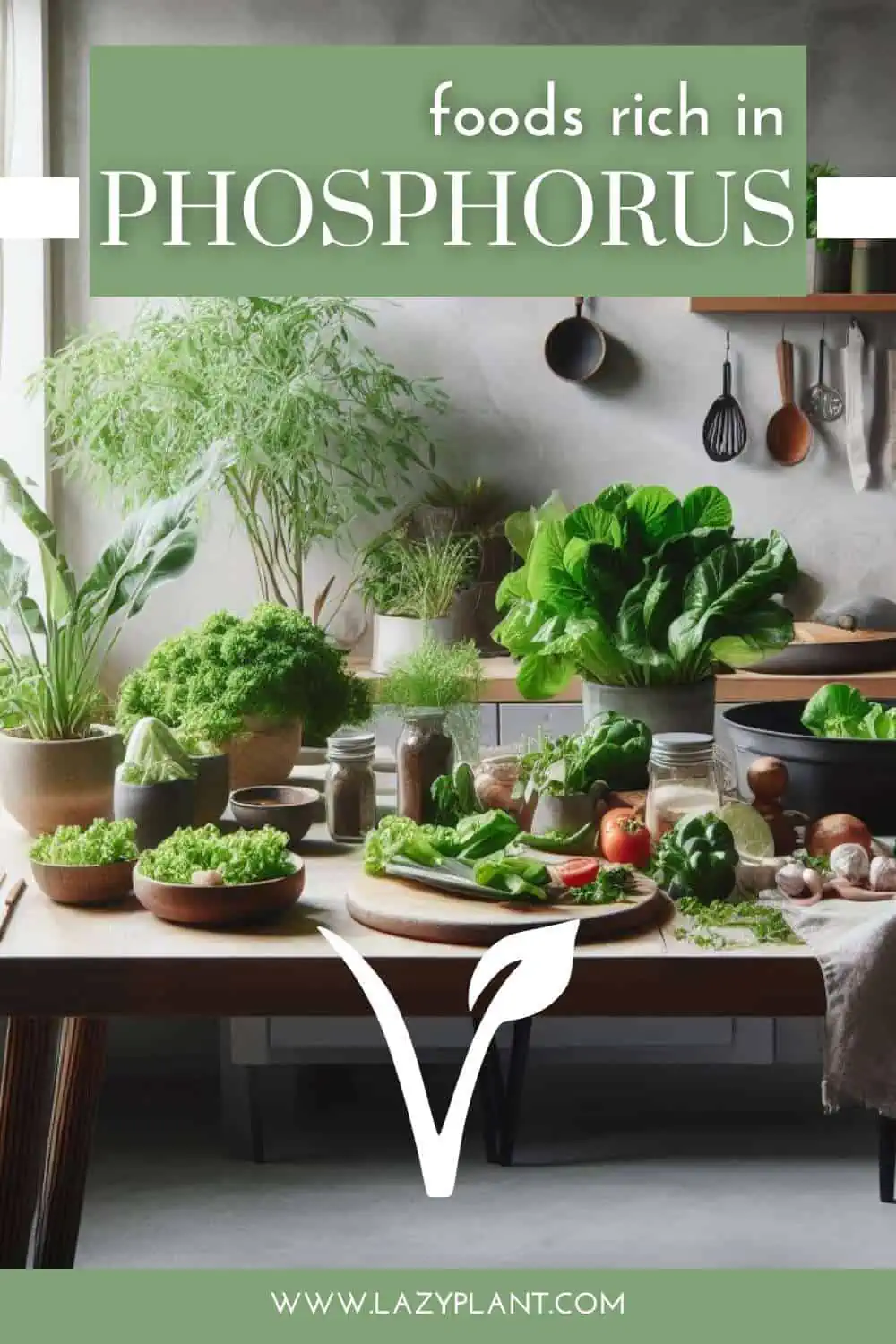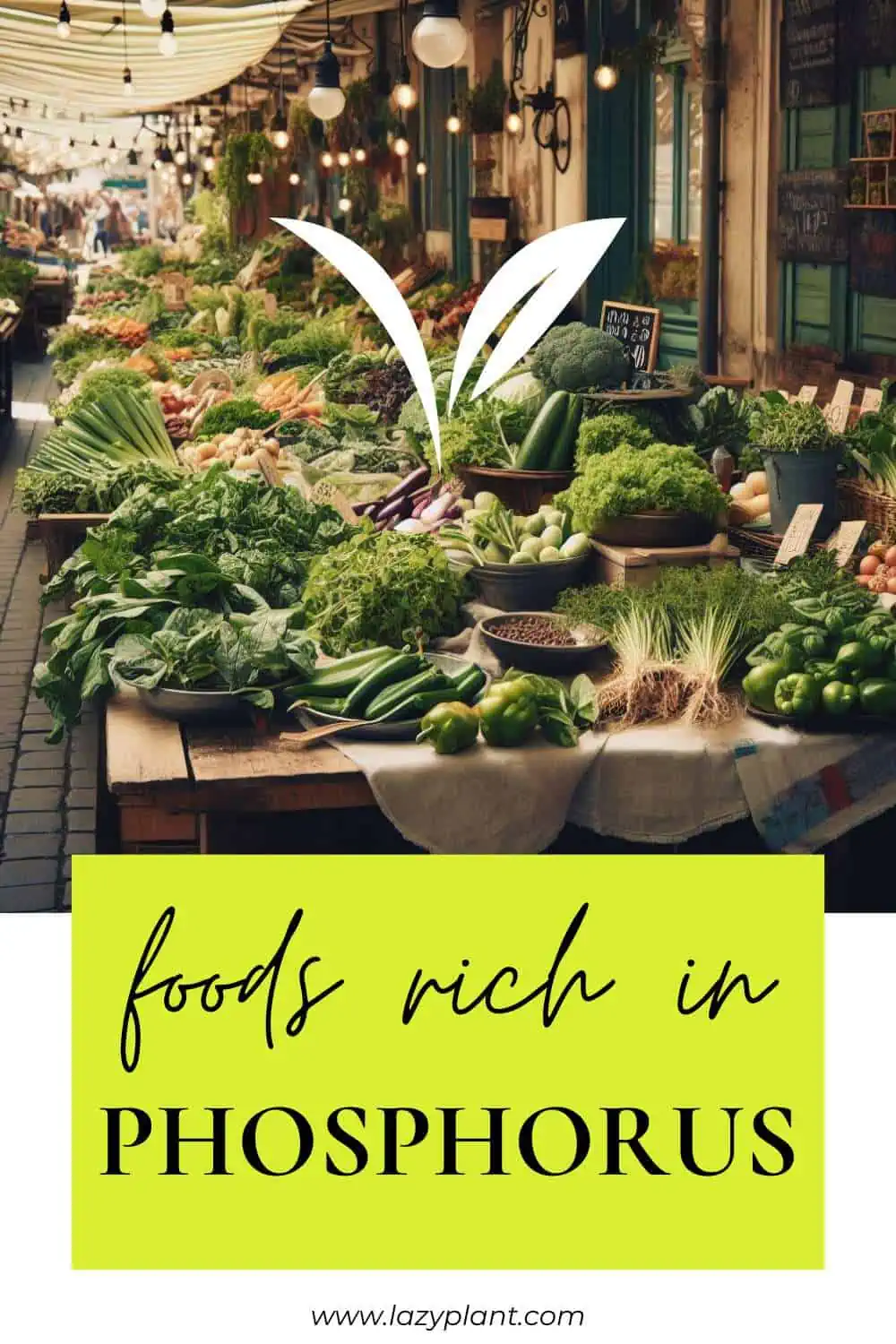Vegans, vegetarians, and people who follow a plant-based diet can get more than enough phosphorus from plant-based foods, as seeds (up to 1,650 mg per 100g), nuts (up to 725 mg), legumes (up to 704 mg), vegetables (up to 356 mg), and grains (410 mg) are all great natural sources.
What does phosphorus do to the body?
Phosphorus is present in bones and teeth, and it’s a key component of DNA, RNA, and cell membrane structure.[1]
Also, it’s essential for energy production, as phosphorus is an important component of ATP. ATP is the body’s key energy source. The main components of ATP are carbon, nitrogen, hydrogen, oxygen, and phosphorus.
In addition, phosphorus is important for many functions of the human body, such as activation of enzymes, maintenance of normal pH, and energy storage.
Moreover, the phosphorus content in the human body is up to 1.4% of fat-free mass. Bones and teeth are the main storage of phosphorus. They contain about 85% of body phosphorus. Most noteworthy, phosphorus and calcium are the two most vital minerals for strong bones and teeth. There are many plant-based sources of calcium as well.
List of vegan foods rich in phosphorus
Certainly, we can consume more than enough phosphorus by following a plant-based diet. Common plant-based foods rich in phosphorus (mg per 100g) are:
- seeds: hemp seeds (1,650 mg), pumpkin seeds (1,233 mg), chia seeds (642 mg), flaxseeds (642 mg), sesame seeds (629 mg), sunflower seeds (629 mg).
- nuts: Brazil nuts (725 mg), pine nuts (575 mg), cashew nuts (490 mg), pistachio nuts (490 mg), almonds (457 mg), walnuts (346 mg), pecans (277 mg), macadamia nuts (188 mg).
- spices: poppy seeds (870 mg), mustard seeds (828 mg), cumin seeds (499 mg), coriander seeds (409 mg), celery seeds (547 mg), fennel seeds (487 mg), cayenne pepper (293 mg), dill seeds (277 mg), dried oregano (148 mg).

- legumes: soybeans (704 mg), lupins (440 mg), navy beans (407 mg), kidney beans (406 mg), adzuki beans (381 mg), black beans (352 mg), lima beans (370 mg), lentils (281 mg), green peas (108 mg), white beans (91 mg).
- whole grains: whole oats (410 mg), whole grain wheat flour (323 mg), whole grain corn flour (210 mg), brown rice (102 mg).
- vegetables: sun-dried tomatoes (356 mg), broccoli (66 mg), parsley (58 mg), kale (55 mg), asparagus (52 mg), potatoes (48 mg), cauliflower (44 mg), beetroots and beet greens (40 mg), peppers (32 mg), and sweet potatoes (31).
- fruits: raisins (75 mg), avocado (52 mg), carrots (35 mg), kiwi (34 mg), apples (33 mg), bananas (22 mg), clementines (21 mg), lemons (16 mg), and oranges (14 mg).
Do we absorb the phosphorus of plant-based foods?
The absorption rate for the phosphorus in foods is between 40% and 70%.
We absorb the lower rate from plant-based foods, though. Phosphorus from animal sources has a higher absorption rate than that from plants
Therefore, vegans and people who follow a plant-based diet would benefit from consuming higher doses of phosphorus than the recommended daily intake!
Phosphorus in seeds and nuts is in the form of phytic acid. That’s the storage form of phosphorus.
How much phosphorus do we need a day?
The recommended daily intake of phosphorus is only 700 mg for adults. Only kids and teenagers need higher doses of phosphorus of 1,250 mg a day.
How can I increase the absorption of phosphorus?
Above all, ensure you follow a well-balanced diet that includes a variety of food sources rich in phosphorus.
Also, it’s crucial to maintain a proper balance between calcium and phosphorus intake. Consuming excessive calcium can interfere with phosphorus absorption.
You should be very cautious, especially if you take calcium supplements. Avoid taking them with a meal containing foods rich in phosphorus. Moreover, you could avoid consuming dairy products with foods rich in phosphorus.

Adequate vitamin D levels are crucial for phosphorus absorption as well. Vitamin D helps regulate the absorption of phosphorus in the intestines. Sun exposure, fortified foods, and supplements are the best sources of vitamin D for vegans.
A healthy gastrointestinal tract is essential for optimal mineral absorption, including phosphorus. A diet rich in fiber as well probiotics (e.g. yogurt, kefir, or water kefir for vegans, sauerkraut, tempeh, kimchi. miso) is crucial for having a healthy gut microbiota.
Does cooking affect phosphorus bioavailability?
Cooking can affect the bioavailability of phosphorus in foods. While phosphorus is generally stable during cooking, soaking and sprouting legumes and grains may enhance phosphorus absorption. The compounds that bind to minerals leach into the water.
The germination process makes beans and nuts significantly more digestible.
Medication may affect phosphorus absorption
Some substances can hinder phosphorus absorption. For instance, excessive intake of certain drugs that contain aluminum or magnesium may reduce phosphorus absorption. Be mindful of their use.
Always consult your physician or registered dietitian before taking any supplement or changing your diet.
Animal sources of phosphorus
Dairy, meat, fish, and eggs are good sources of phosphorus. For instance, dried salmon (816 mg), egg yolk (390 mg), beef (230 mg), whole egg (198 mg), chicken (160 mg), mozzarella cheese (548 mg), Greek yogurt (137 mg), and milk (84 mg) are all high in phosphorus.[2]
If you want to boost your phosphorus status, you could eat animal with plant-based foods containing phosphorus. You’ll absorb more.
However, there is no need to eat animal-derived foods to consume the recommended daily intake. We can get more than enough phosphorus from plant-based foods.
Who is at risk for phosphorus deficiency?
Phosphorus deficiency is rare, as there are many vegan foods high in phosphorus. Only people with severe health problems or genetic disorders may have a high risk of phosphorus deficiency.
What’s the maximum dose of phosphorus I can safely take a day?
The maximum safe dose of phosphorus is 4,000 mg for adults, teenagers, and children older than 9 years.
Additionally, the maximum dose for elderly people and younger children is 3,000 mg.
Also, pregnant women shouldn’t get more than 3,500 mg of phosphorus a day.
Only people who are receiving supplemental phosphorus under medical supervision could exceed these maximum safe limits.
Side effects of too much phosphorus
As a rule of thumb, high phosphorus intakes rarely produce side effects in healthy people.
But, extremely high phosphorus intakes, even over short periods of time, could interfere with calcium metabolism, negatively affecting the kidneys, causing bone loss, vascular calcification, and endothelial dysfunction. Hence, too much phosphorus may contribute to renal failure, cardiovascular disease, cancer, and osteoporosis![1]
Furthermore, phosphorus can interact with certain medications.
So, you should always consult your healthcare provider before taking phosphorus supplements.
Do I need dietary supplements?
Healthy people don’t need dietary supplements. Actually, most Americans consume more phosphorus than the recommended daily intake.
Phosphorus deficiency is rare in the United States. In most cases, a disease, not a poor diet, leads to low levels of phosphorus.
Low phosphorus levels can be dangerous for health, though. Anorexia, anemia, muscle weakness, bone pain, increased infection risk, and confusion are only a few side effects of phosphorus deficiency.
Can I get too much phosphorus from food?
The upper safe dosage of phosphorus is 3,000-4,000 mg. We shouldn’t exceed this maximum safe dose. Too much phosphorus may cause adverse effects.
People with chronic kidney disease should be cautious with portion sizes of foods containing phosphorus. The kidneys can’t remove excess phosphorus as effectively.
In fact, high phosphorus intake might be a sign that you follow an unhealthy diet. Consuming more vegetables and fruits, while reducing the consumption of meat and dairy, is beneficial for health.
Always consult your physician before changing your diet.
When should I eat food rich in phosphorus for better absorption?
There isn’t a specific “best” time of day to eat foods rich in phosphorus for better absorption.
Phosphorus absorption is a complex process influenced by various factors, including the overall composition of your diet, the presence of other minerals like calcium, vitamin D levels, and the health of your gastrointestinal tract.
Rather than focusing on a specific time, aim to include phosphorus-rich foods in your meals and snacks throughout the day. This helps provide a steady supply of phosphorus for your body’s needs.
In addition, you should incorporate phosphorus-rich foods as part of well-balanced meals that include a variety of nutrients. This helps create an environment that supports optimal absorption.
Vegan recipe ideas to skyrocket your phosphorus status
Here are 8 easy and quick vegan recipes that combine foods that boost your phosphorus intake and enhance its absorption:
Lentil and quinoa bowl: Combine cooked lentils and quinoa with spinach, cherry tomatoes, and cucumber. Drizzle with tahini dressing for added flavor.
Chickpea and spinach curry: Cook chickpeas with spinach, tomatoes, onions, and garlic in a flavorful curry sauce.
Tofu and broccoli stir-fry: Stir-fry tofu and broccoli with colorful bell peppers, seasoned with soy sauce, ginger, and garlic.

Vegan lentil soup: Cook red lentils with carrots, celery, and onions. Add cumin and coriander to vegetable broth.
Quinoa and black bean salad: Mix cooked quinoa with black beans, corn, tomatoes, and cilantro. Dress with a zesty lime dressing.
Vegan tofu scramble: Sauté tofu with turmeric, spinach, tomatoes, onions, and nutritional yeast for a savory scramble.
Chia pudding with almond butter: Mix chia seeds with almond milk, sweeten with maple syrup, and top with almond butter and berries.
Vegan chickpea salad sandwich: Make a sandwich filling with mashed chickpeas, celery, red onion, and vegan mayo.